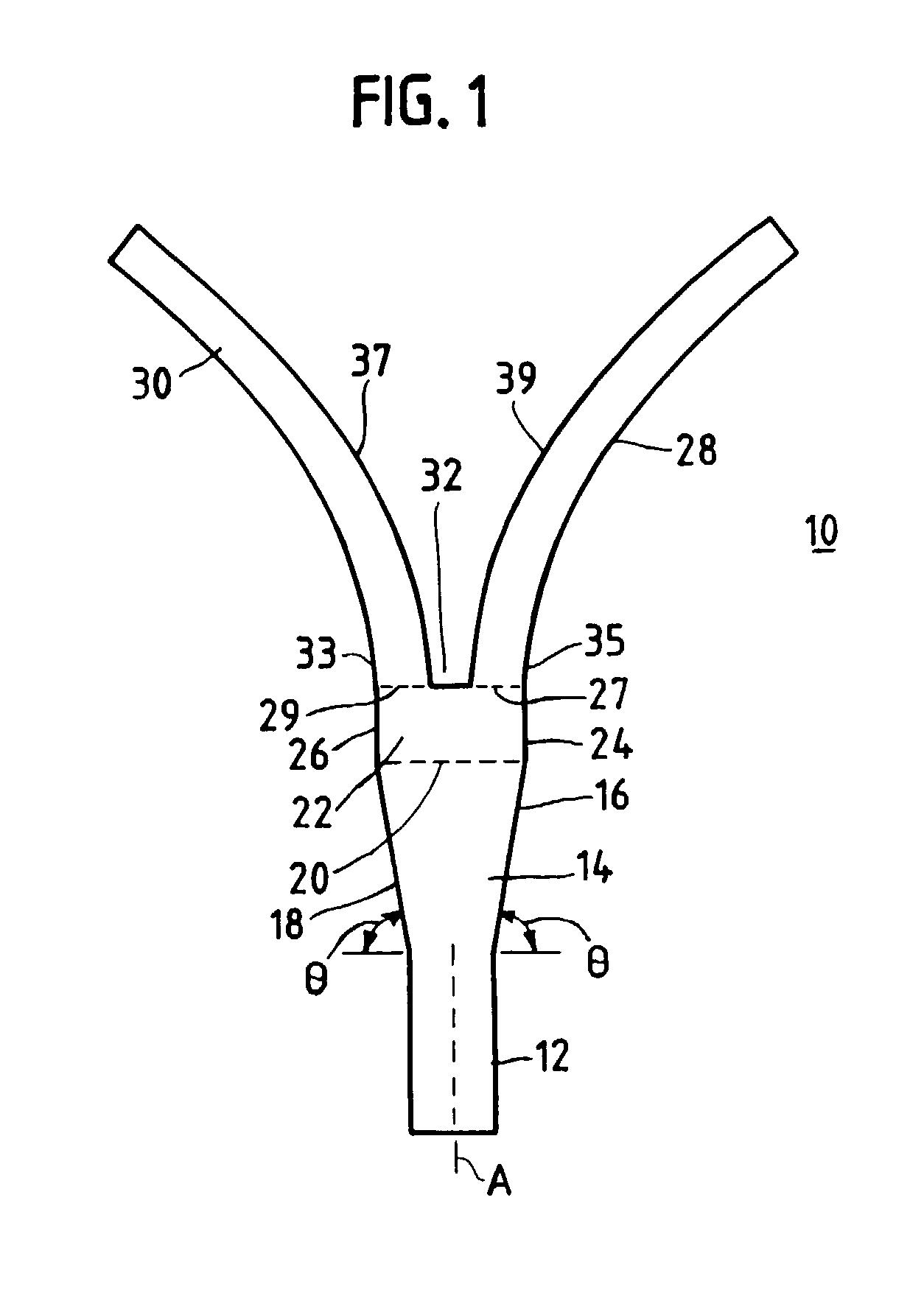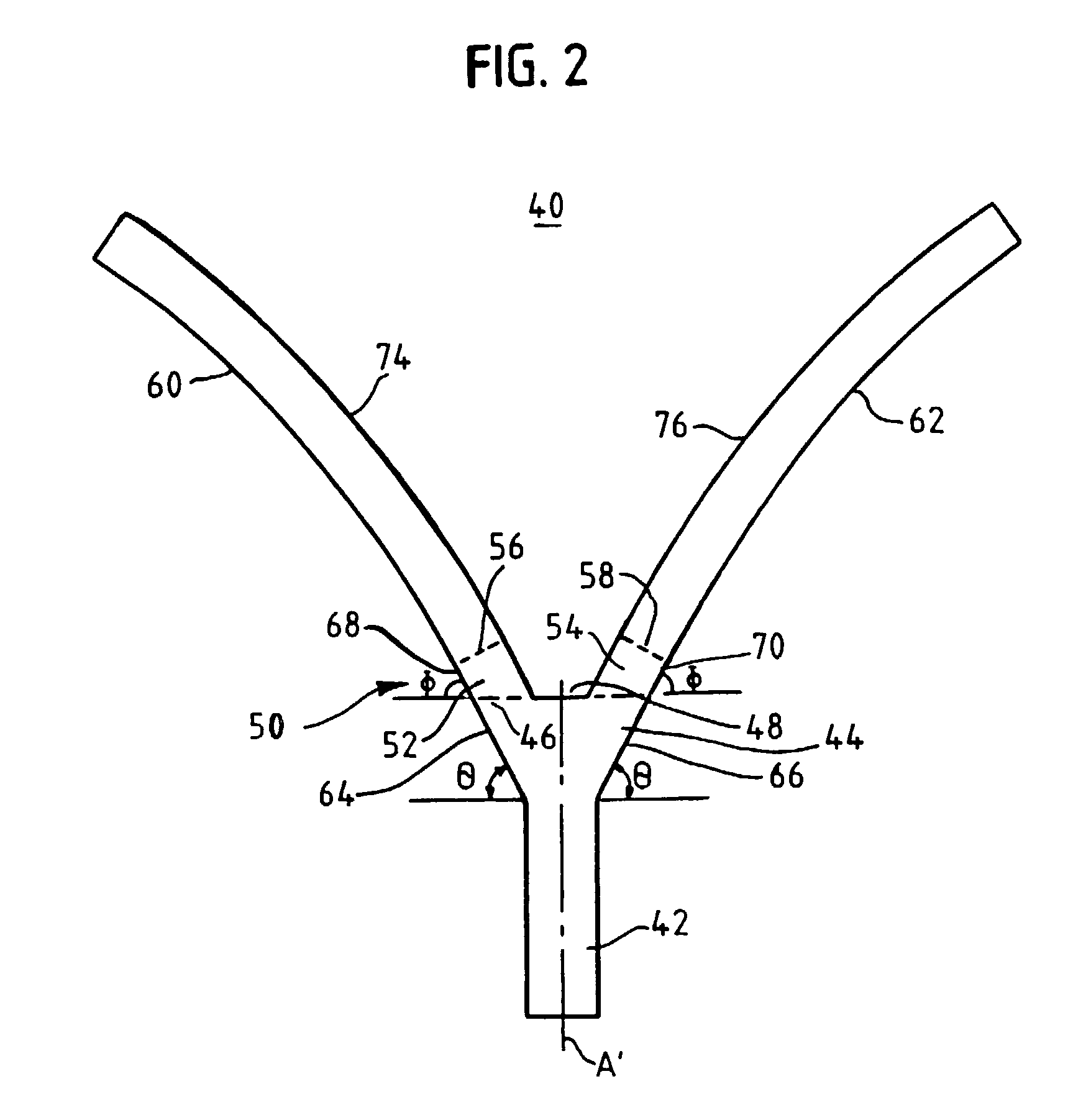Optimized Y-branch design
a technology of y-branch and design, applied in the field of optical y-branch design, can solve the problems of state of the art y-branch losing a large amount of input energy, complex structure of optical network components,
- Summary
- Abstract
- Description
- Claims
- Application Information
AI Technical Summary
Problems solved by technology
Method used
Image
Examples
example
[0035] The branching waveguides and the input waveguide have rectangular cross-sections--taken orthogonal to the propagation axis of section 42--of a width of approximately 3 .mu.m and a height of approximately 3 .mu.m. The linear taper section 44 was approximately 75 .mu.m in length, measured along the propagation axis of the input waveguide and expanded to a width of 7 .mu.m at its maximum. An approximately 3.degree. taper angle (measured from the an input propagation axis) was used. Each straight section was approximately 20 .mu.m in length, as measured along the propagation axis starting at the gap position, and each straight section formed an angle with propagation axis of approximately 3.degree.. The gap had a width of between 0.5 to 1 .mu.m, and the radius of curvature on the portions of the branching waveguides at their trailing edges was approximately 1500 .mu.m.
[0036] In any event, the use of a straight section between the taper region and the output waveguides, as shown i...
PUM
 Login to View More
Login to View More Abstract
Description
Claims
Application Information
 Login to View More
Login to View More - R&D
- Intellectual Property
- Life Sciences
- Materials
- Tech Scout
- Unparalleled Data Quality
- Higher Quality Content
- 60% Fewer Hallucinations
Browse by: Latest US Patents, China's latest patents, Technical Efficacy Thesaurus, Application Domain, Technology Topic, Popular Technical Reports.
© 2025 PatSnap. All rights reserved.Legal|Privacy policy|Modern Slavery Act Transparency Statement|Sitemap|About US| Contact US: help@patsnap.com



